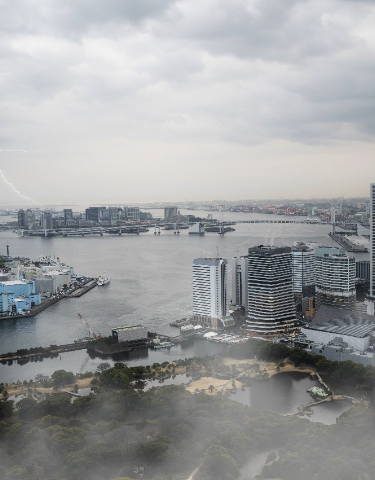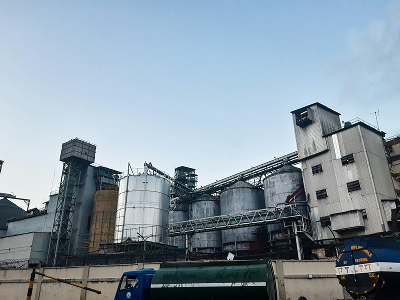Background
In September 2025, Super Typhoon Ragasa unleashed a force of nature that severely impacted Southeast Asia, particularly the Philippines, Taiwan, Hong Kong, and southern China. The typhoon, classified as a “super typhoon” by the Japan Meteorological Agency (JMA), reached wind speeds of up to 295 km/h, making it one of the strongest storms in recent years. It caused widespread devastation across coastal regions, uprooting communities, damaging infrastructure, and triggering severe flooding.
The typhoon disrupted daily life, crippling transportation systems, including air, sea, and road travel. The ports in southern China, crucial nodes for international trade, were forced to close due to the typhoon’s massive winds and storm surges. According to reports, Hong Kong’s airport recorded flight delays and cancellations, while the maritime industry in southern China saw major shipping disruptions, with vessels delayed and ports unable to process cargo efficiently. This disruption in trade cost millions of dollars and underscored the vulnerabilities in global supply chains and transportation networks to extreme weather events. The typhoon also significantly affected agricultural output in affected areas, exacerbating food security concerns in the region.
In addition to the physical damage, there was a profound socio-economic impact, with thousands of people displaced, businesses interrupted, and economies struggling to recover. As the effects of climate change increasingly alter weather patterns, the frequency and severity of such events are expected to rise, making climate resilience a critical necessity for both businesses and governments alike.
The Imperative for Climate Risk Management
The nature of a Super Typhoon like Ragasa demands an integrated, forward-looking disaster risk management framework that treats climate risk as a core strategic threat.
- Ragasa demonstrated that climate risks from natural calamities are not just environmental issues but a trigger for financial, operational, and reputational risk. Damage to a factory (physical risk) leads to supply chain delays (operational risk), which results in loss of revenue and stock price decline (financial risk), and criticism over inadequate employee safety measures (reputational risk). A robust risk management approach maps these complex interdependencies.
- Global regulatory bodies, including central banks and securities commissions, are increasingly mandating climate-related financial disclosures (e.g., Task Force on Climate-related Financial Disclosures, The International Sustainability Standards Board). Companies that fail to demonstrate adequate climate resilience planning not only face regulatory penalties but also increasing exposure to climate-related litigation from shareholders who suffer losses due to poor risk governance.
- Traditional risk models, heavily reliant on historical weather data (e.g., 1-in-100 year events), are fundamentally flawed. A forward-looking risk management framework will incorporate climate-scenario analysis—stress-testing the enterprise against conditions never before experienced—to avoid underestimating the probability of high-impact, high-frequency events.
Climate Adaptation Planning for Business – A Practical, Action-Oriented Approach
Adapting to the new climate reality requires a tangible, action-oriented enterprise risk management approach with risk identification as the first step. Incorporating such a framework goes beyond mere compliance to foster genuine enterprise resilience
1.Conduct a Climate Resilience Stress Test
Businesses must model the impact of high-end climate scenarios (e.g., a 2°C or 4°C rise in global temperature) on their specific assets and value chain nodes. For a manufacturer, this means identifying which suppliers are in flood zones; for a financial institution, it means stress-testing loan portfolios in areas with high wildfire or drought risk.
Outcome – Translates abstract climate science into monetary and operational impact (e.g., “A Ragasa-level storm causes a $50 million loss of production and a 12-week business interruption event”).
2.Build Climate-Smart Supply Chain Redundancy
The principle of “dual sourcing” must evolve to “dual-climate-zone sourcing.” Companies should avoid concentrating critical suppliers in geographically and climatically contiguous high-risk areas. Furthermore, invest in digital twin technology to model the real-time operational impact of climate events on logistics routes before a storm hits.
Outcome – Reduces the single-point-of-failure risk demonstrated by the Ragasa-paralyzed Chinese ports, ensuring operational continuity.
3.Integrate Climate Risk into Capital Allocation
All major capital expenditures—new factories, data centres, warehouses—must undergo a climate-adjusted Internal Rate of Return (IRR) analysis. Investments in flood-proofing, elevating critical equipment, and procuring backup power should be treated as essential risk-reduction investments, not optional sustainability costs.
Outcome – Ensures that new assets are “future-proofed” against physical climate risks, preserving long-term asset value.
4.Leverage Adaptation Opportunities
Climate change creates new market opportunities. Businesses can adapt by offering innovative climate-resilient products (e.g., drought-resistant agriculture, decentralized energy solutions, climate-focused data services). This includes investing in R&D for technologies that enhance the resilience of their customer base.
Outcome – Shifts the risk management perspective from purely defensive mitigation to value-generating adaptation, capturing new market share.
Insights for businesses from IRM’s Climate Change Risk Management Guidance
The Institute of Risk Management’s (IRM) guidance provides a robust governance blueprint, emphasizing that climate risk must be managed at the highest levels of the organization.
- Climate change risks must be embedded within existing Enterprise Risk Management (ERM) frameworks (e.g., COSO, ISO 31000). Treating them as stand-alone environmental or CSR risks will lead to inadequate governance and resource allocation.
- A critical first step is creating a clear, consistent, and organization-wide climate risk taxonomy that explicitly separates financial risks associated with climate change into Physical, Transition, and Liability categories for comprehensive assessment and reporting.
- Active risk management must address the growing threat of Liability risk stemming from ‘failure to mitigate’ greenhouse gas emissions, ‘failure to adapt’ to physical impacts, or ‘failure to disclose’ climate-related risks adequately.
- Organizations must evaluate how climate change is creating supply chain risks (physical and transition risks) and shifting customer preferences (demand risk), driving the need for business model adaptation.
- Risk managers must explicitly model and track the potential for increased concentration and risk aggregation exposures due to climate change—for example, assessing how floods and regulatory changes might converge to impact a particular asset class.
- Climate scenario analysis should be treated as a form of integrated stress testing, designed to reveal vulnerabilities in business and capital plans, rather than just a forecasting exercise.
- A Climate Change Risk Radar should be implemented as a key diagnostic tool. Its purpose is to translate macro-level external drivers (new legislation, technology shifts, public pressure) into identified, internal organizational risks.
- Risk assessment is insufficient without considering the Three Horizons Model (short, medium, long-term). This distinguishes between existing, changing risks (Horizon 1) and new, emerging risks that may only crystallize decades later (Horizon 3).
- Organizations must utilize the PESTLE framework (Political, Economic, Social, Technological, Legal, Environmental) in strategic management to systematically scan the macro-environment and build consensus on future climate threats and opportunities.
- Given data scarcity, the most robust approach to assessment is a blend of qualitative and quantitative tools. This includes expert judgement workshops, traditional risk interviews, and sophisticated catastrophe models/integrated stress tests.
- To ensure accountability, climate risk considerations (both qualitative and quantitative metrics) must be explicitly included within the organization’s risk appetite statements and Key Risk Indicators (KRIs).
- The ultimate goal of risk analysis is to calculate the aggregate financial impact on the income statement, balance sheet, and key financial metrics (like regulatory capital or risk-weighted assets) to support mandatory financial disclosures.
- Risk managers must become strategic collaborators, setting up cross-functional channels to gain buy-in and knowledge from areas like operations, supply chain, finance, and legal to identify risks effectively.
- Risk reporting must translate complex climate scenarios into clear, actionable data for the Board, including bespoke climate risk dashboards that report assessments across short, medium, and long-term horizons.
- To gain a competitive advantage, risk managers should map the organization’s climate competitiveness against peers based on two variables: preparedness to mitigate risks and ability to seize low-carbon opportunities.
Policy Recommendations for promoting Climate Change Resilience in India
To transition from a reactive to a proactive climate resilience posture, India requires an integrated, policy-driven framework that aligns business incentives with national sustainability goals.
Adoption of a National Climate Adaptation Strategy – India needs a cohesive, cross-sectoral policy that mandates climate-proofing of critical national infrastructure (ports, railways, power) and links state-level natural disaster management planning to national climate models. This would provide the necessary regulatory certainty for long-term private sector investment in resilience measures.
Implementation of a ‘Circular Economy Action Plan’ for Materials and Resources – A policy focus on circularity—maximizing product life and minimizing waste—would directly address two key climate risks: resource scarcity and supply chain vulnerability. For instance, a mandate for material efficiency and industrial symbiosis reduces reliance on virgin resources and high-risk international shipping, mitigating the shock of events like Ragasa.
Introduction of an ‘India Climate Taxonomy Regulation’ – A clear, scientifically-backed classification system (Taxonomy) defining which economic activities are “environmentally sustainable” and “climate-resilient” is crucial. This policy would channel public and private capital towards green investments, discourage greenwashing, and ensure that infrastructure projects in high-risk zones meet stringent resilience criteria to access capital.
Conclusion
The systemic shock delivered by Super Typhoon Ragasa is an undeniable demonstration that climate risk is enterprise risk. The future valuation of a business will be inextricably linked to its Climate-Adjusted Resilience Score. Enterprise value, in this evolving ecosystem, is no longer solely derived from efficient operation but from the ability to withstand and rapidly recover from a cascade of environmental and consequential business risks.
The path forward demands that business leaders treat adaptation planning as a core pillar of strategic growth. By implementing scenario-based stress tests, integrating climate metrics into capital allocation decisions, and actively pursuing adaptation opportunities, a business not only mitigates loss but also creates enduring value. Building a business more resilient to the evolving ecosystem is not an overhead cost—it is the ultimate act of fiduciary responsibility and the clearest pathway to long-term competitive advantage. The time for theoretical debate is over; the age of mandatory climate resilience is upon us.















